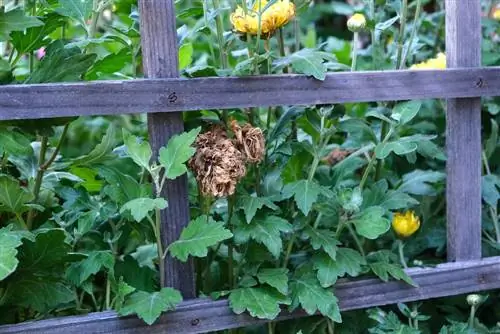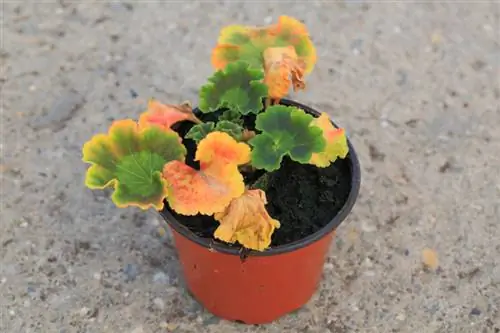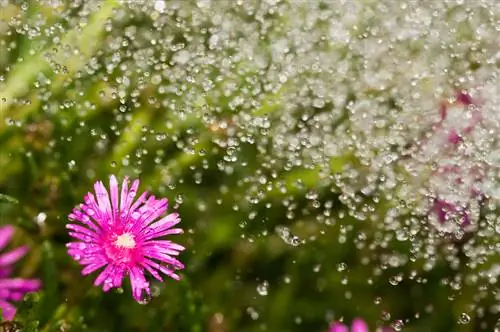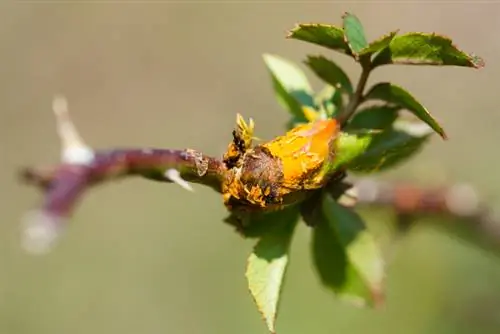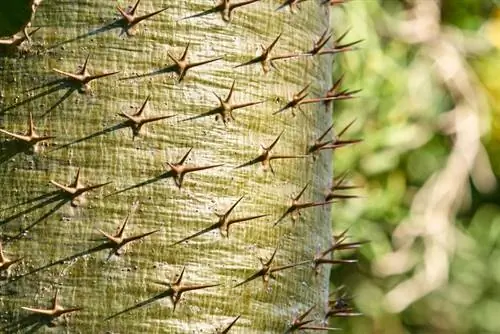- Author admin [email protected].
- Public 2024-01-05 20:48.
- Last modified 2025-01-23 11:22.
Virtually every plant in the garden can be affected by plant diseases or attacked by pests. The robust appearing daisy is no exception. However, if the problems are identified early, they can usually be treated without too much effort.

How can daisy diseases be prevented and treated?
Daisy diseases such as root rot, mold, leaf spot or powdery mildew can be prevented by choosing the right location, adequate watering and sparing fertilization. In the event of an infestation, affected plant parts should be removed and disposed of with household waste; in severe cases, the use of fungicides may be necessary.
What diseases do daisies suffer from most often?
Even if daisies arenot particularly susceptible, they still suffer from the following diseases from time to time:
- Root rot and mold formation
- Leaf spot disease
- Mildew
- Pests
When the drought persists, daisies can quickly hang their heads. However, this does not become a disease as long as the daisy recovers quickly after extensive watering. If watering does not have the desired effect, then be sure to check the plant for root rot. If the daisies are put out too early after the winter, cold nights can lead to frost damage.
How can I treat mold and pests on daisies?
The type of disease treatment essentially dependson the pathogenYou should first spray pests with a sharp jet of water and then fight them with home remedies. If there is root rot and mold formation drying out the plants is important. In mild cases, it may be enough to avoid watering for a few days. If the infestation is severe, replacing the soil in the bed or repotting the daisy helps.
How do I treat fungal diseases in my daisies?
Fungal diseases include powdery mildew and leaf spot. They mainly occur in warm, humid weather. You should remove affected plant parts immediately and dispose of them with household waste. They definitely don't belong in the compost, because the fungal spores can survive there and be put back into the garden later. If there is severe fungal infestation, you can switch to special fungicides (antifungal agents) or dispose of the affected plant completely. A treatment with a mixture of milk and water in a ratio of 1:9 may also help against mildew.
How can I prevent diseases in daisies?
Even beforecare, the rightlocation selectionis important to prevent diseases and pests on your daisies. These plants prefer airy locations with well-drained soil. Root rot and mold formation occur much less frequently. Aphids don't feel comfortable there either. Daisies are generally considered easy to care for, but require a lot of water. However, you should use fertilizer sparingly. Above all, high nitrogen content in the soil should be avoided. It stimulates the sap production of the daisies, which magically attracts aphids.
Tip
Daisies on the balcony
In general, balcony plants are cared for no differently than daisies in the bed, but you should pay particular attention to adequate watering, because daisies are quite thirsty. With regular pruning and a little fertilizer, you can extend the flowering period of your daisies a little.

